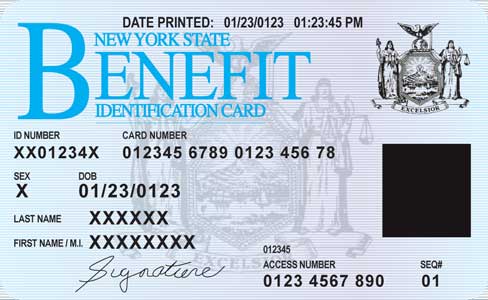Nearly 800,000 New Yorkers collected welfare checks last fiscal year — most in decades
New York City shelled out cash assistance to 787,400 residents last fiscal year — the most welfare checks it’s issued in at least two decades, dating back to the Giuliani administration.
While taxpayers have already been socked with a more than $5.5 billion tab the past two years to provide shelter and other services for a mass influx of migrants, they’ve also had to separately deal with a surge in New Yorkers seeking handouts.
Mayor Adams budgeted $2.46 billion in federal, state and city funds for cash assistance payments during the fiscal year that ended June 30 after previously budgeting $1.99 billion in Fiscal Year 2023, and $1.57 billion in Fiscal Year 2022.
The biweekly checks — $91.50 for single adults and $144.50 for households of three — are supposed to pay for utilities, rent, clothing and other necessities.
The number of New Yorkers who received welfare checks last fiscal year is 19.1% more than the 660,800 recipients in fiscal 2023, according to the annual Mayor’s Management Report.
In August alone, 569,981 New Yorkers pocketed the handouts — a 16.5% increase from the same period a year earlier, and the most the Big Apple has seen in a single month since parts of 2000, a Post examination of city records shows.
It’s also 48.2% higher than the monthly welfare rolls Adams inherited when he took office in 2022.
The city’s Department of Social Services attributes the huge hike to an “unprecedented” challenge of trying to help New Yorkers get back on their feet after many — especially people of color — were hit hard in the pocket during the pandemic.
The agency insists the migrant crisis isn’t driving the rapid rise in welfare checks.
While it estimates that roughly 2% of current cash assistance recipients are “non-citizens” – about 11,200 people — the city claims only “a very small percentage” them are illegal border crossers who’ve arrived since spring 2022.
In March, the agency estimated 1.3% of that month’s 535,184 recipients were non-citizens, or nearly 7,000.
However, as The Post reported in February, thousands of migrants who don’t qualify for typical welfare assistance are still being gifted monthly checks totaling hundreds of dollars after the state Office of Temporary and Disability Assistance modified its “Safety Net Assistance” program’s eligibility rules to include non-citizens with pending applications for legal asylum status.
Get all the stories that move New York to your inbox
Sign up for our Metro Daily newsletter!
Thanks for signing up!
Similar to welfare, SNA has historically provided cash payments to needy New Yorkers who don’t qualify for conventional public assistance, including single adults, childless couples, and families of persons abusing alcohol and drugs.
“The migrants may not be causing the rise in cash assistance, but there’s still a clear parallel here,” said Stephen Eide, a senior fellow at the conservative think tank Manhattan Institute who tracks public assistance.
“Both with the welfare rolls, and the migrant shelter spending, the city has essentially backed into two grossly expensive benefit expansions. I don’t know what’s worse: strategically deciding more people should be on welfare, or accidentally allowing an increase that wipes out two decades of gains in reducing dependency.”
When Rudy Giuliani became mayor in 1994, he inherited a welfare crisis, and the number of New Yorkers getting monthly cash assistance soared to record 1,160,593 by the time he implemented a series of reforms in March 1995.
He made getting recipients back to work a priority – especially those who preferred collecting checks to clocking in at a job – and pushing welfare reform initiatives like his Work Experience Program, where many recipients helped clean city parks and streets and answered phones in city offices in exchange for temporary assistance.
The numbers plummeted to 497,100 midway through 2001, Giuliani’s final year in office, and the downward spiral continued under his successor, Michael Bloomberg. In December 2013, Bloomberg’s last month in office, 346,398 New Yorkers collected unemployment checks.
In May 2014, under then-Mayor Bill de Blasio, the city’s monthly rolls dropped to 336,403 – its lowest since the early 1960s. However, the monthly recipients rose to 384,523 by the time de Blasio left office at the end of 2021 in part because of policies he implemented to help simplify the application process and the economic strains of the pandemic.
DSS spokesman Nicholas Jacobelli crowed that the Adams administration “has connected a record number of New Yorkers to cash assistance in compliance with state and federal regulations, which includes the recent reinstatement of mandatory work requirements that were suspended during and in the immediate aftermath of the pandemic to bolster New York City’s recovery.”
“The agency remains committed to . . . connecting them to key employment supports, so they can achieve self-sufficiency,” he added.









